Giro Synthe MIPS II helmet review
The updated Synthe comes with a lower price than the original due to its use of a superseded type of MIPS, but as the 'UItegra' of Giro's range it is still a high-performance road helmet
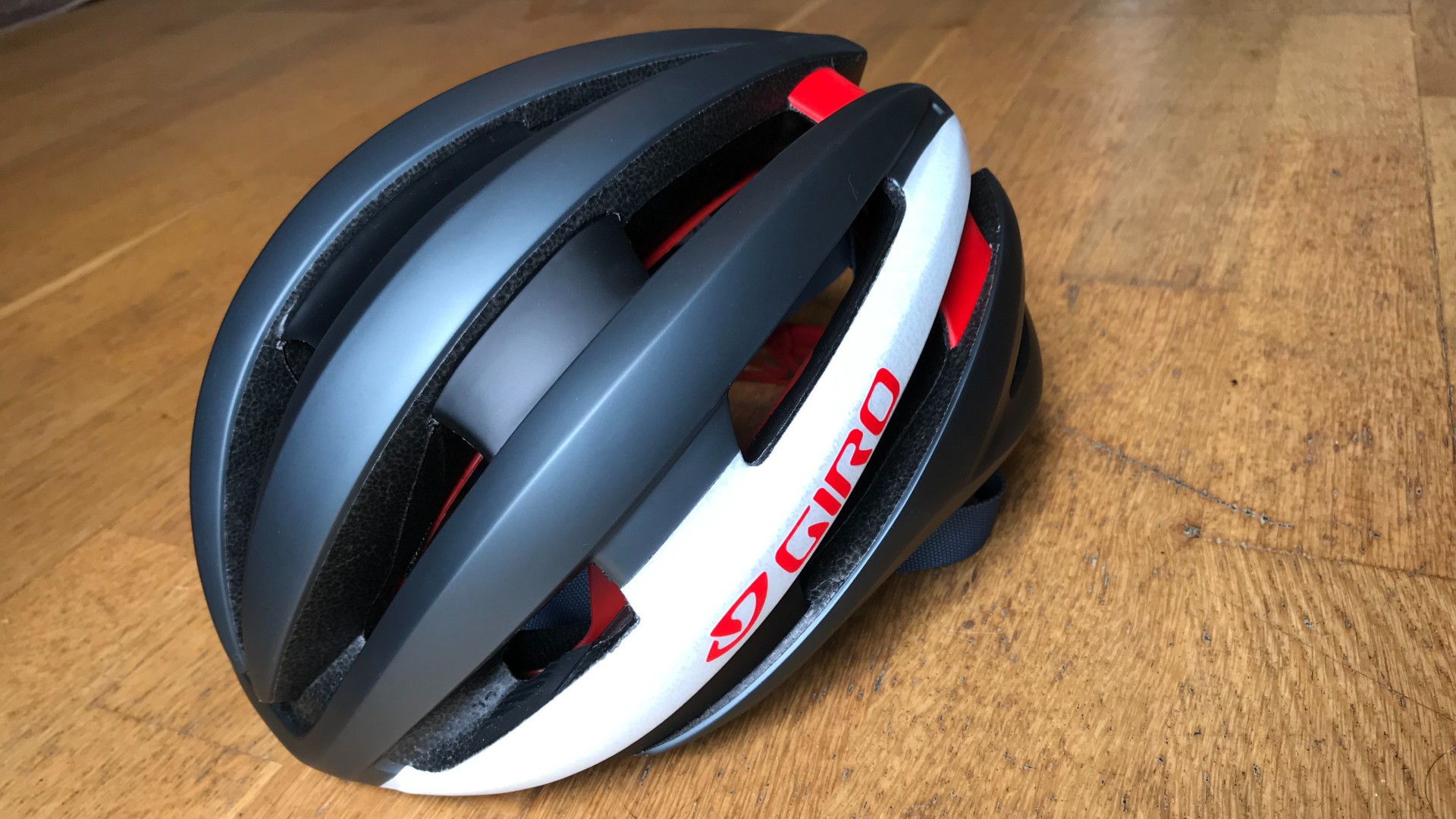
It's not often that an updated, improved version of helmet is priced lower than the original, but this is the case with the Giro Synthe MIPS II. This is because it uses what has become entry-level MIPS - the slip plane type - now that Giro is speccing its latest Spherical MIPS on its flagship road helmets the Eclipse and Aether. However, if you're not bothered about having the latest MIPS protection system and are looking for a comfortable, well vented, classic-looking road helmet the Giro Synthe MIPS II could be for you.
-
+
Very comfortable
-
+
Classic looks
-
+
Updated integrated MIPS (though not the flagship Spherical type)
-
+
Lower price than the original
-
-
Wide look might not suit narrow faces
You can trust Cycling Weekly.

The original Giro Synthe launched in 2014 and was one of the most advanced pro-level helmets at the time. It was comfortable, well ventilated, aerodynamic, lightweight, slimline and strong with Giro’s Roll Cage reinforcement.
Giro calls it an ‘icon’ - justifiably. So how to improve on it?
Giro Synthe MIPS II: construction
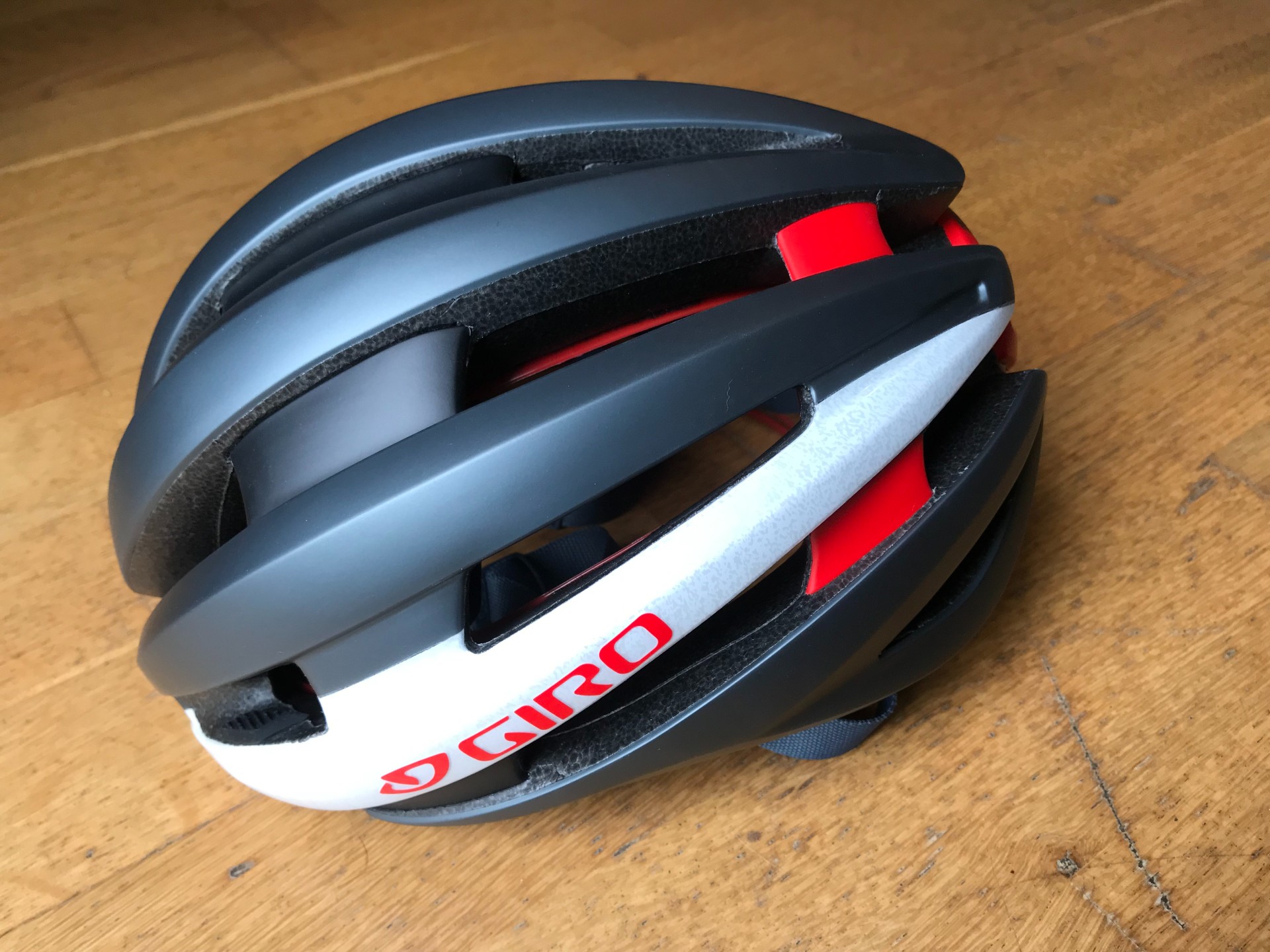
The Giro Synthe MIPS II keeps the same classic 'hand of bananas' shape but is, according to Giro, updated to be lighter and more comfortable than ever before.
How has this been achieved? The Synthe II no longer has the polycarbonate mesh panel that filled one set of side vents, enabling improved airflow through its 10 vents. This also gives it a cleaner look but Giro doesn’t claim any aero improvements.
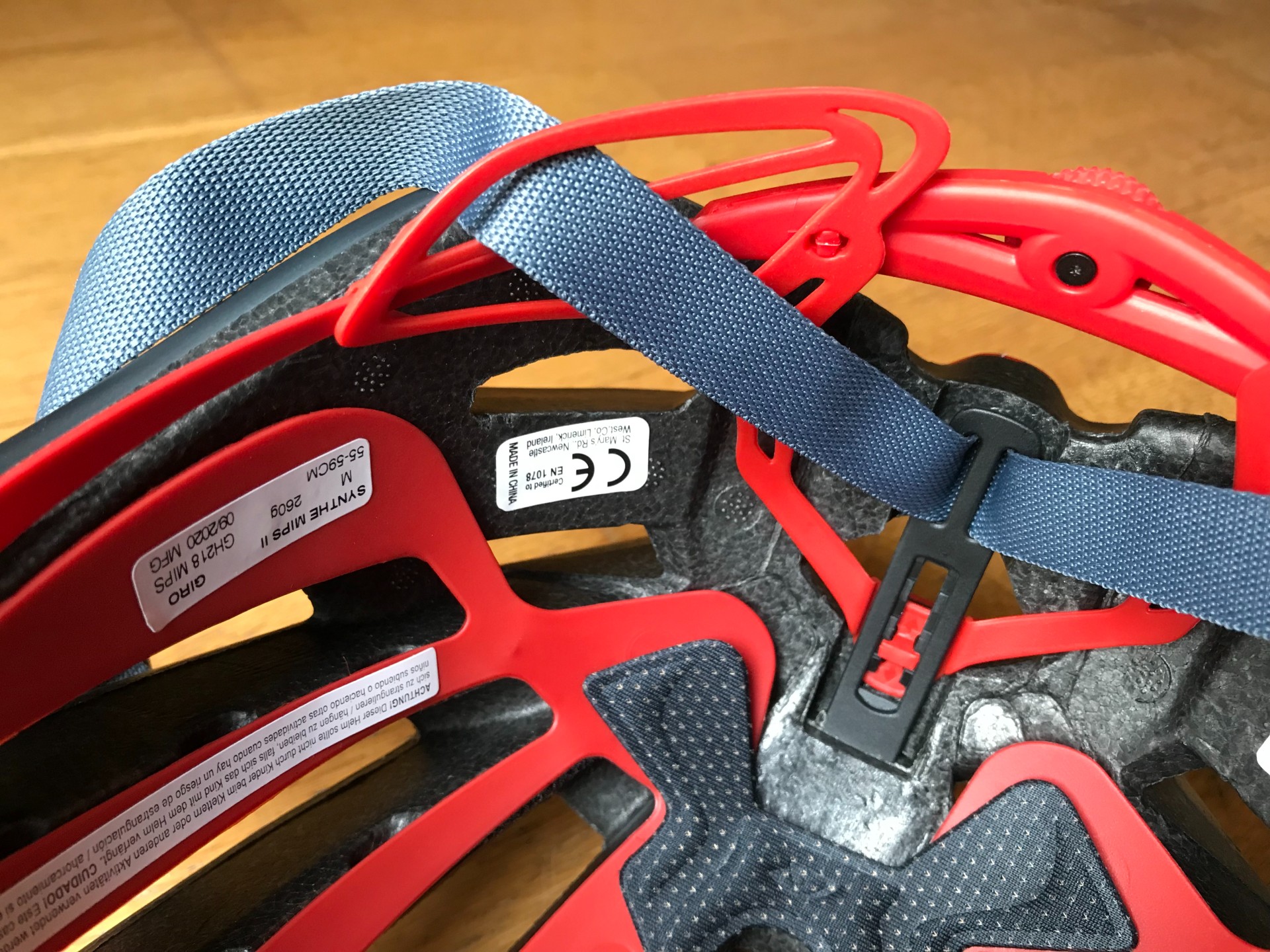
The Synthe MIPS II uses a newer integrated MIPS (multi-directional impact protection system) than the original so that the plastic slip plane is now combined with Giro’s Roc Loc 5 closure.
Giro doesn’t reveal how the weight has been lowered and by our measurements the original Synthe was actually lighter.
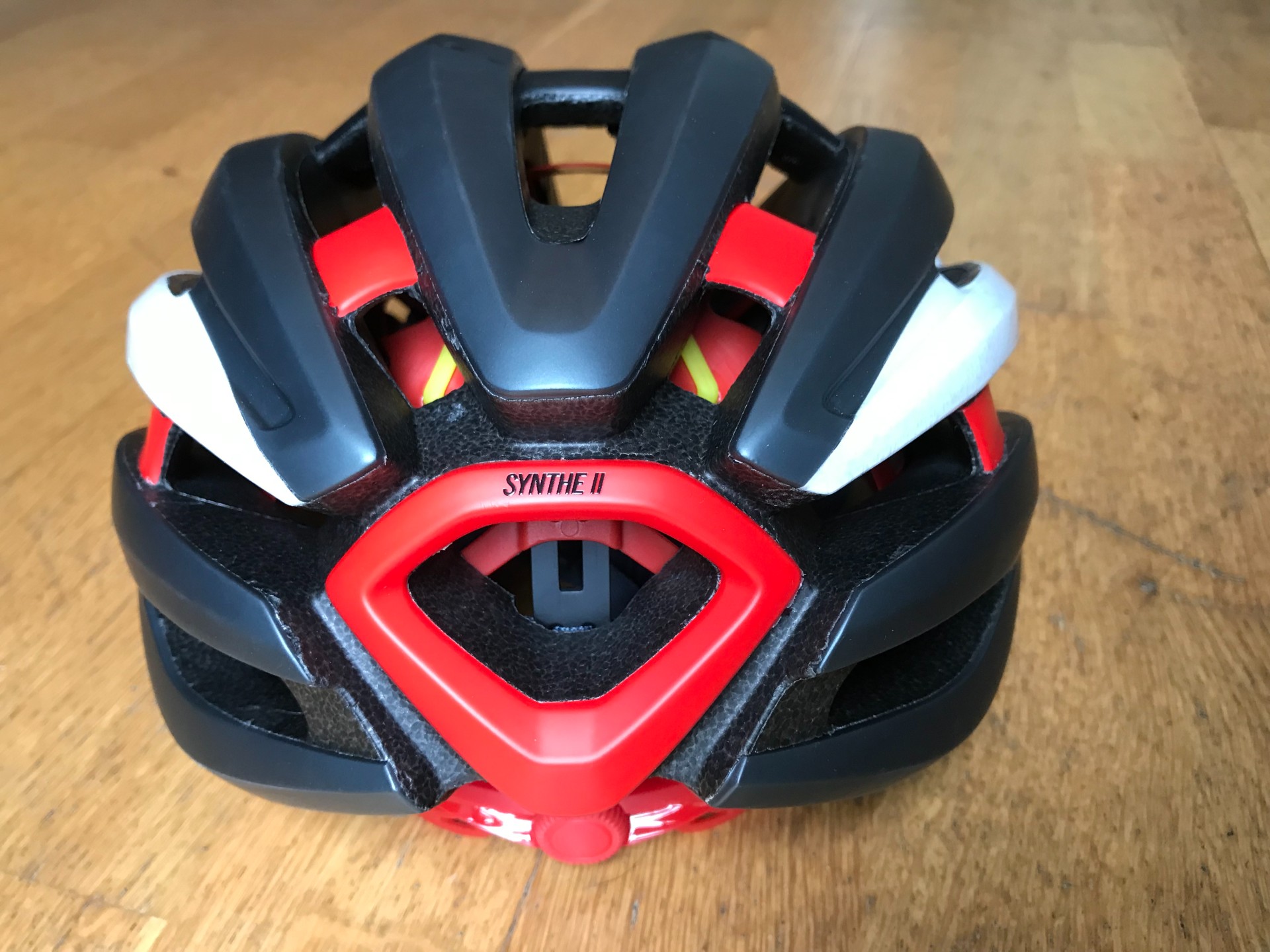
Either way, we’re only talking grams and it’s certainly not a big deal: Giro’s very latest pro-level helmet, the Eclipse Spherical, has a claimed weight of 275g, which is a gram heavier than our size M Synthe MIPS II (actual weight).
Something indisputably lower is the price. In 2017 when we included the original Synthe in our Editor’s Choice roundup of the year’s best kit it cost £249. The new version has an RRP of £179.
The lower price reflects that the Synthe II doesn't use the more sophisticated Spherical MIPS of the Eclipse, Aether and Helios. Spherical MIPS dispenses with the slip liner since it consists of two shells that slip against each other, often compared to a ball and socket.
However, the Synthe II still compares very favourably to its more expensive siblings.
The ride
Thanks to the integrated Roc Loc 5 Air MIPS cradle, and probably due to the shape of the helmet itself too, comfort is very impressive. Helmet fit is a personal thing, but I’ve always got on well with Giro helmets. Some say Giro helmets suit rounder heads, but mine is more oval and since the days of the Pneumo 20 years ago I’ve found Giro road helmets to supply a glove-like fit.
If you've got on well with the fit of Giro helmets in the past, you'll get on well with the Synthe MIPS II.
The straps are easy to adjust for correct spacing around the ears. Giro's standard straps and plastic hardware are specced here.
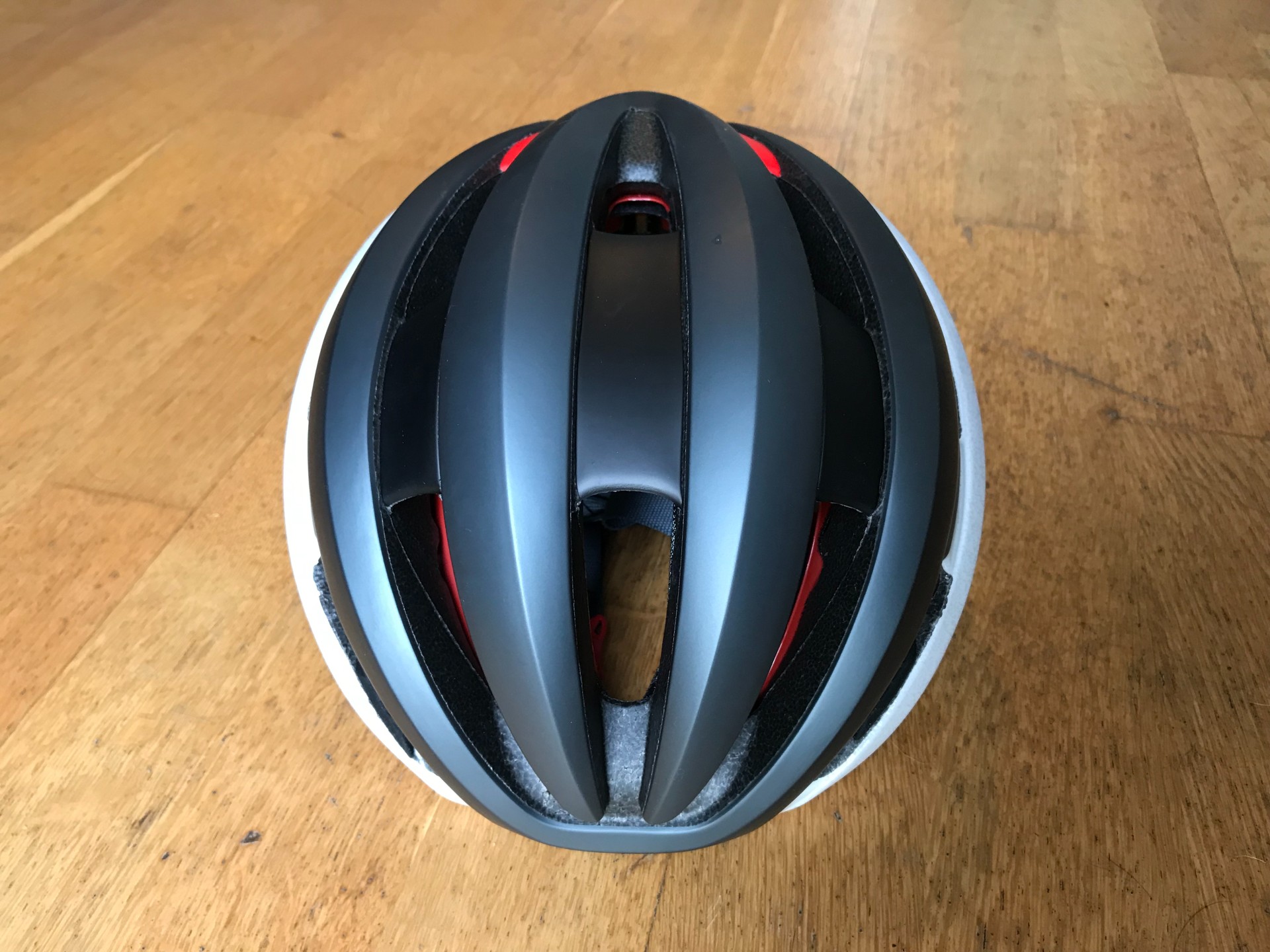
A custom touch, however, is the additional of small rubber grippers at the entrance to the front/side vents which work as what some helmet manufacturers call an ‘eyewear dock’. These work really well and - as with Giro helmets of the past - the vents are exactly in the right place for sticking your sunnies in.
This helmet was only launched last November so I can’t verify Giro’s claims that it’s better vented than the original, but the 19 vents do let air rush in easily and I’d say there won’t be a problem with overheating in warm weather. Before he was famous Ollie Bridgewood tested the original Giro Synthe for CW in Majorca on the Sa Calobra climb in 25 degrees and reported that the only discomfort was in his legs.
The only thing I’m not quite convinced by is the shape of the Giro Synthe II MIPS. I don’t have the original one here to compare it to so I can’t say for sure that it is more flared than it used to be, but it now looks wide compared to other modern road helmets, certainly wider than equivalent sizes in the Giro Helios, HJC Furion and Abus Gamechanger - my three regular helmets. I prefer a lower-profile helmet as I have a longish head that can easily appear mushroom shaped with a helmet that’s too wide sitting atop it, so if you’re the same it’s worth trying one on first and looking in the mirror.
To be clear, this doesn't affect the excellent fit - it's just the shape of the shell.
Value and conclusion
As I've mentioned, this latest iteration of the Synthe uses what has become entry-level MIPS now that Spherical MIPS is here, and for that reason the price has dropped from £249 - the RRP of the original Synthe - to £179.
MIPS aside, Giro has tweaked the performance of the Synthe II so that now it's better ventilated, more comfortable with its (cheaper) integrated MIPS and its weight matches that of the flagship Giro aero helmet, the Eclipse.
The wider look might not suit those with narrower heads - though once again to be clear that's just the looks rather than the fit, which is superb.
The Giro Synthe II MIPS might now be the Ultegra of Giro road helmets, but as we all know, that's where you get the performance without the price tag.
| Giro Synthe MIPS II specs | Header Cell - Column 1 | Header Cell - Column 2 |
|---|---|---|
| Integrated MIPS® brain protection system | Row 0 - Cell 1 | Row 0 - Cell 2 |
| Featherweight webbing with Slimline™ buckle- Ionic+™ anti-microbial padding | Row 1 - Cell 1 | Row 1 - Cell 2 |
| In-Mold polycarbonate shell with EPS liner | Row 2 - Cell 1 | Row 2 - Cell 2 |
| Thermoformed SL Roll Cage™ reinforcement | Row 3 - Cell 1 | Row 3 - Cell 2 |
| Roc Loc® 5 Air Mips | Row 4 - Cell 1 | Row 4 - Cell 2 |
| 19 Wind Tunnel™ vents with internal channeling | Row 5 - Cell 1 | Row 5 - Cell 2 |
| S 20”–21.75”/51–55cm, M 21.75”–23.25”/55–59cm, L 23.25”–24.75”/59–63cm | Row 6 - Cell 1 | Row 6 - Cell 2 |
| Complies with the US CPSC Safety Standard for Bicycle Helmet for Persons Age 5 and Older | Row 7 - Cell 1 | Row 7 - Cell 2 |
| Weight (size M): 274g | Row 8 - Cell 1 | Row 8 - Cell 2 |

Thank you for reading 20 articles this month* Join now for unlimited access
Enjoy your first month for just £1 / $1 / €1
*Read 5 free articles per month without a subscription

Join now for unlimited access
Try first month for just £1 / $1 / €1
Get The Leadout Newsletter
The latest race content, interviews, features, reviews and expert buying guides, direct to your inbox!
Simon Smythe is a hugely experienced cycling tech writer, who has been writing for Cycling Weekly since 2003. Until recently he was our senior tech writer. In his cycling career Simon has mostly focused on time trialling with a national medal, a few open wins and his club's 30-mile record in his palmares. These days he spends most of his time testing road bikes, or on a tandem doing the school run with his younger son.
-
 'I'll take a top 10, that's alright in the end' - Fred Wright finishes best of British at Paris-Roubaix
'I'll take a top 10, that's alright in the end' - Fred Wright finishes best of British at Paris-RoubaixBahrain-Victorious rider came back from a mechanical on the Arenberg to place ninth
By Adam Becket Published
-
 'This is the furthest ride I've actually ever done' - Matthew Brennan lights up Paris-Roubaix at 19 years old
'This is the furthest ride I've actually ever done' - Matthew Brennan lights up Paris-Roubaix at 19 years oldThe day's youngest rider reflects on 'killer' Monument debut
By Tom Davidson Published
-
 'One of the hardest races I've ever done in my life' - Tadej Pogačar finishes runner-up on Paris-Roubaix debut after crash
'One of the hardest races I've ever done in my life' - Tadej Pogačar finishes runner-up on Paris-Roubaix debut after crashWorld champion reacts to 'extremely hard' battle with Mathieu van der Poel
By Tom Davidson Published